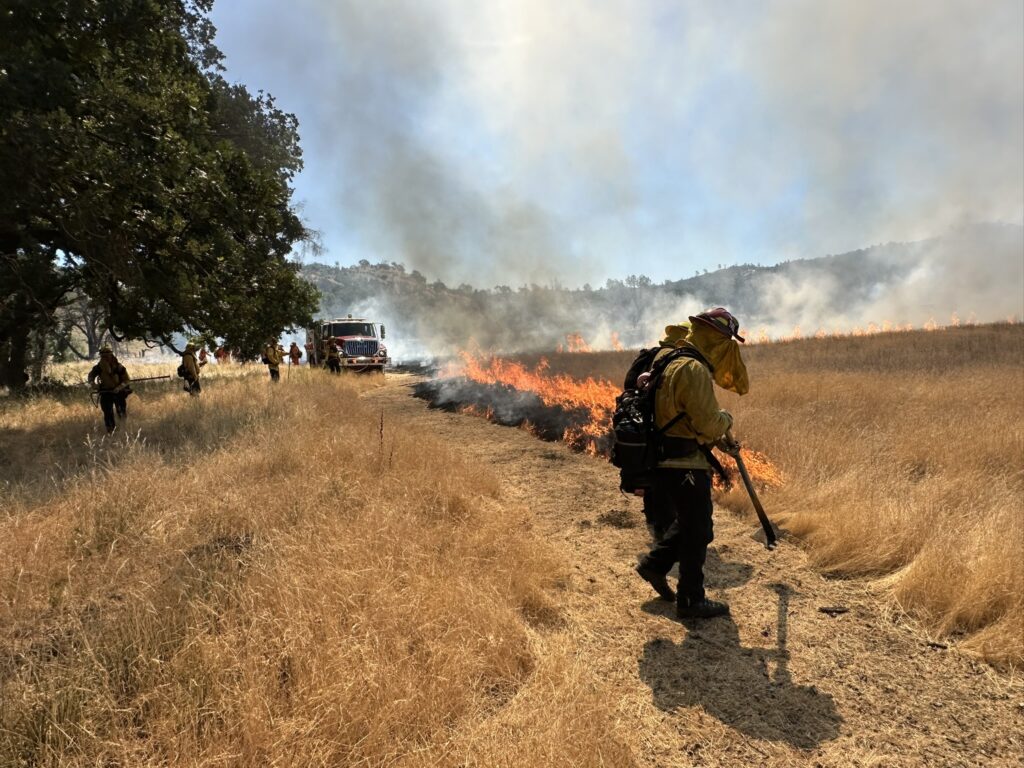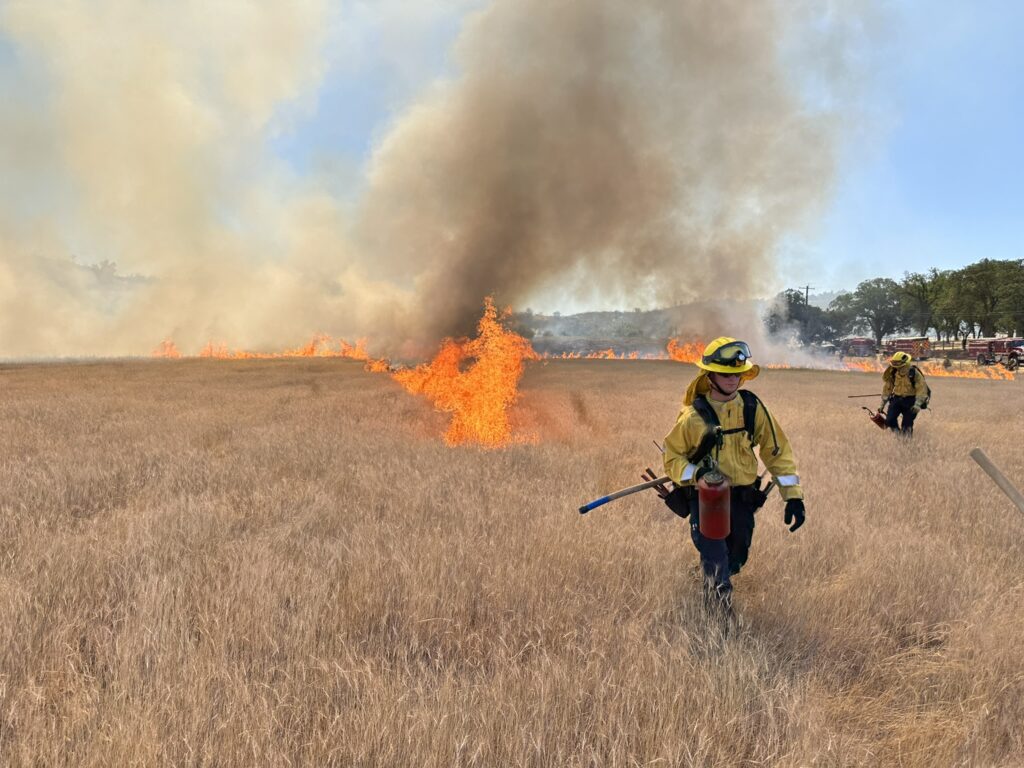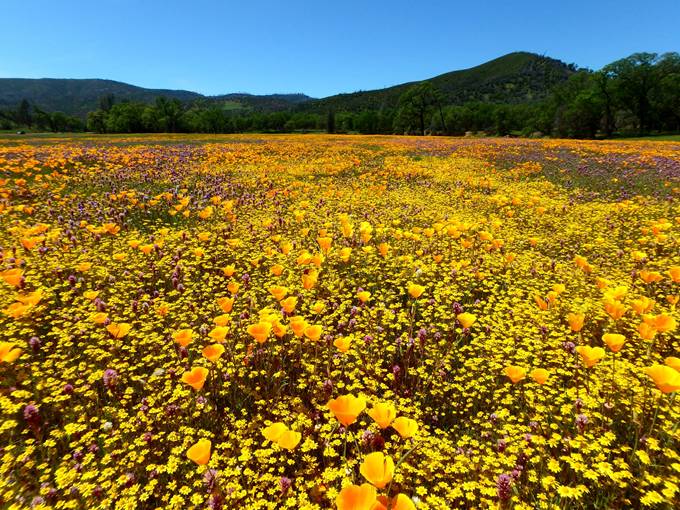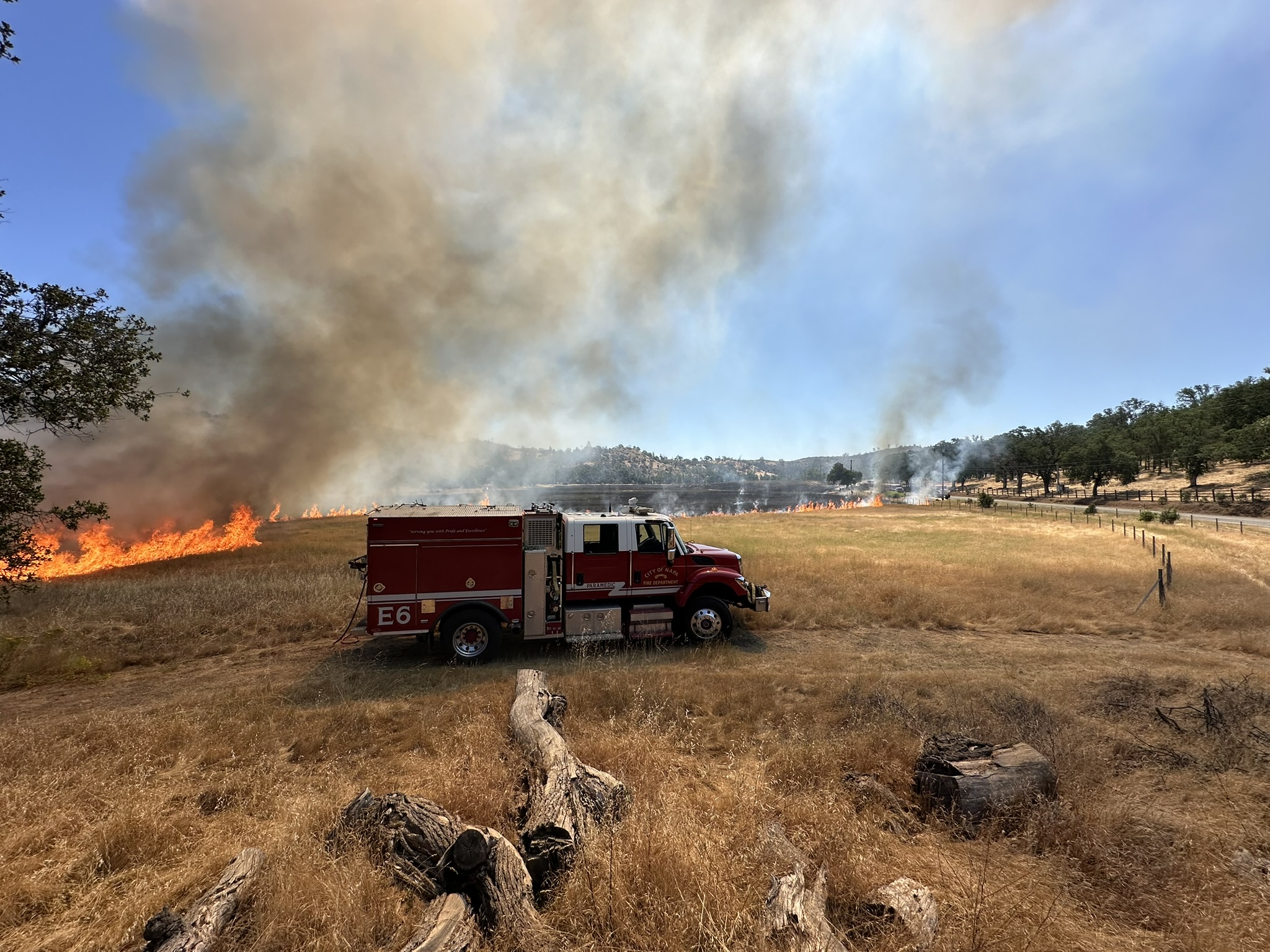The Land Trust of Napa County, in partnership with CAL FIRE, successfully conducted a 51-acre prescribed burn on its Missimer Wildflower Preserve, a significant step in restoring native species in one of the region’s most biodiverse ecosystems: the serpentine prairie.
These serpentine meadows are among the most important botanical sites in Napa County and the greater Bay Area. Serpentine soils are high in heavy metals and low in essential nutrients. These prairies support an extraordinary diversity of plant life adapted to these unique conditions.
Despite covering only 434 acres, the Missimer Preserve in Snell Valley is home to over 290 native plant species, nearly a quarter of all known native species in Napa County. Several of these species are listed as threatened or endangered by the California Native Plant Society and the State of California, underscoring the area’s exceptional conservation value.
This fire-adapted landscape relies on periodic burning to maintain ecological health. Prescribed fire helps suppress invasive annual grasses such as barbed goat grass (Aegilops triuncialis) and medusahead (Taeniatherum caput-medusae). The fire removes dense thatch layers and returns nutrients to the soil.
The burn was the culmination of a major planning and preparation process, including Land Trust staff, CAL FIRE, and the Bay Area Air Quality Management District. CAL FIRE Battalion Chiefs Robert Wettstein and Jason Freyer carried out the operation safely and efficiently, ensuring complete combustion of invasive species. CAL FIRE Environmental Scientist Hailey Laskey worked with Land Trust staff and CAL FIRE crews to protect sensitive, rare, and threatened resources, including western pond turtles (Actinemys marmorata) and yellow-legged frogs (Rana boylii).

“The Missimer Preserve’s serpentine prairies are one of the county’s most biologically rich and ecologically significant areas,” said Mike Palladini, Land Trust Stewardship Director. “This prescribed burn builds on our ongoing efforts to restore these outstanding conservation values and underscores our commitment to science-based land management. In addition to the restoration benefits, the prescribed burning has also reduced fuel loads and provided wildfire protection benefits to local communities.”
Prior prescribed burns on this site have yielded striking results, including the resurgence of rare wildflowers like Pink star-tulip (Calochortus uniflorus) and Brewer’s milk-vetch (Astragalus brewerii). By reducing the dominance of invasive species, fire opens space and resources for native plants and animals to thrive.
In addition to biodiversity benefits, this prescribed fire reduced the fuel load and created an emergency evacuation zone for the nearby community of Berryessa Estates. Removing dried invasive grasses can reduce the potential spread of wildfire, making this an important step in managing fire risk. Prescribed fire can further mitigate wildfire impacts, offering a proactive tool amid increasingly extreme fire seasons and climate volatility.
This prescribed burn is part of the Land Trust’s long-term strategy to restore rare habitats and strengthen community resilience in a changing climate. It sets the stage for a vibrant wildflower bloom next spring and a healthier landscape. The Land Trust will continue to monitor the site closely to assess habitat response and inform future restoration efforts.



Read the Napa Register story here.

